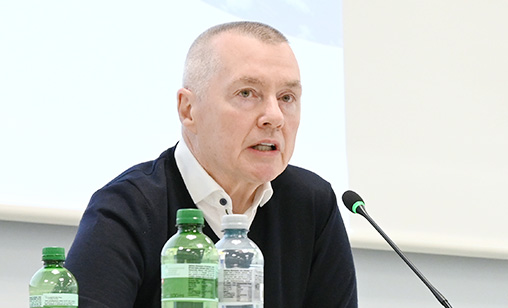News
Enough is enough
December 1st 2024
The International Air Transport Association (IATA) is taking a serious look at whether there is evidence that aircraft and engine manufacturers, as well as other sectors in the supply chain, are indulging in anti-competitive behaviour, the association’s director general, Willie Walsh, told attendees at the recent Global Media Day in Geneva. Read More »
Airlines are dealing with quasi-monopoly suppliers, Walsh said. “There could well be evidence this is a case of these suppliers being able to abuse their dominant position. They are benefitting from the supply chain issues. There is no evidence they are resolving this,” he said, and added what aircraft and engine manufacturers are doing so far to address the situation is “just not good enough”.
 |
| 'With airlines continuing to contend with major delivery delays and a shortage of spare parts. I would prefer it if we did not have to go down that road, but we have been patient for too long. Key suppliers appear to be immune from normal competitive dynamics' |
| Willie Walsh IATA director general |
It would be only the second time IATA has been engaged in an investigation about potential anti-competitive behaviour by a supplier. It joined a case against CFM International about information sharing with third-party MRO providers in 2016. It had been pursued by some of IATA’s members with the European Commission. The matter was settled in 2018.
The breakdown in the aerospace global supply chain has persisted after the pandemic and there is little sign of any easing. Walsh doubted the industry would be back on track before the end of the decade, creating “a major challenge”.
“Supply chain issues are frustrating every airline with a triple whammy on revenues, costs, and environmental performance,” Walsh said. “Load factors are at record highs. There is no doubt that if we had more aircraft they could be profitably deployed, so our revenues are being compromised.
“Meanwhile, the aging fleets airlines are operating have higher maintenance costs, burn more fuel and take more capital to keep flying. On top of this, leasing rates have risen more than interest rates as competition among airlines has intensified the scramble to find every way possible to expand capacity.”
“This is a time when airlines need to be fixing their battered post-pandemic balance sheets, but progress is effectively capped by supply chain issues that manufacturers need to resolve.”
IATA estimates around 700 aircraft are grounded at present because of engine durability issues and a lack of spare parts. Boeing and Airbus are struggling to meet delivery targets with engines, cabin interiors and structural components the main sectors impacting aircraft production.
“Our biggest frustration is the supply chain, aircraft and engines. It is a bigger impediment right now than infrastructure,” Walsh said. “There is no evidence of it getting better.”
“We are seeing aircraft being operated that really should be retired.” Walsh was referring to A340s and A380s, among other types that are being returned to service. Planned industry growth next year will be “coming at significant additional cost” as airlines are forced to continue operating uneconomical aircraft, he said.
IATA data shows the average age of an aircraft in 1990 was just over 12 years. It has been an average of 13.6 years since then. In 2024, it moved up to 14.8 years. “We have been patient, but our patience has run out. The situation is unacceptable and insufficient effort has been put into resolving this issue,” Walsh said.
The 1,254 aircraft delivered this year compares with 1,813 deliveries in 2018. IATA estimates the forecast of 1,802 deliveries in 2025 is “unrealistic”.
The cumulative number of unfulfilled orders for new aircraft has reached a record high of 17,000 airplanes. At current delivery rates, it will take 14 years to address this backlog, double the six-year average spanning 2013 to 2019.
Addtionally, exceptional demand for leased aircraft to fill the capacity shortfall has pushed leasing rates for narrow-bodies to 20%-30% higher than in 2019.
“Manufacturers are letting down their airline customers and that is having a direct impact of slowing the efforts of airlines to limit their carbon emissions. If the aircraft and engine manufacturers could sort out their issues and keep their promises, we would have a more fuel-efficient fleet in the air,” Walsh said.